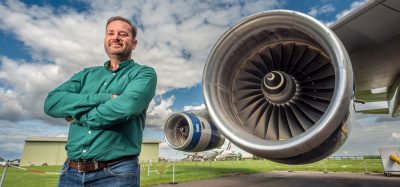Copenhagen Airport installs large battery for green energy storage
- Like
- Digg
- Del
- Tumblr
- VKontakte
- Buffer
- Love This
- Odnoklassniki
- Meneame
- Blogger
- Amazon
- Yahoo Mail
- Gmail
- AOL
- Newsvine
- HackerNews
- Evernote
- MySpace
- Mail.ru
- Viadeo
- Line
- Comments
- Yummly
- SMS
- Viber
- Telegram
- Subscribe
- Skype
- Facebook Messenger
- Kakao
- LiveJournal
- Yammer
- Edgar
- Fintel
- Mix
- Instapaper
- Copy Link
Posted: 21 March 2024 | International Airport Review | No comments yet
It is a milestone achieved as partners in the EU project ALIGHT have succeeded in managing the risks associated with installing a battery in an airport’s critical infrastructure.


Copenhagen Airport installs large battery for green energy storage.
As one of the first airports in Europe, Copenhagen Airport has had a battery installed for storing green power. It is a milestone achieved as partners in the EU project ALIGHT have succeeded in managing the risks associated with installing a battery in an airport’s critical infrastructure.
In airports of the future, it becomes crucial to be able to store power from solar and wind energy to reduce emissions and achieve the goal of net-zero operation. Energy storage in batteries is part of the solution.
Even though obtaining approval to operate a battery system in an airport’s critical infrastructure is a challenge, a large battery will soon be operational at Copenhagen Airport – one of the first batteries in a European airport.
“We are pleased that we have succeeded in installing the battery in Copenhagen Airport. It is an important step towards more sustainable operations at the airport. Now we need to start testing different scenarios and find the best solution for energy storage at the airport, which we can then further develop on a larger scale in the airport,” says Maria Skotte, Vice President of Sustainability, Copenhagen Airport.
Security risks have been mitigated
The risks associated with operating a battery in an airport are numerous. Through the collaboration between Copenhagen Airport, Danish Technological Institute, and Hybrid Greentech, all partners in the ALIGHT project, it has been possible to minimise the risks that hindered the installation and upcoming commissioning of the battery.
“Fire and smoke development, data leaks, and legal issues are some of the risks and barriers associated with setting up a battery in an airport environment. Therefore, at Danish Technological Institute, we are pleased to have contributed to specifying the battery system and conducting unique safety tests that have helped make it successful at Copenhagen Airport,” says Lars Overgaard, Project Manager, Technical Institute.
Hybrid Greentech is behind the energy management system that will be used to operate the battery at the airport. This also requires security measures.
“The control system delivered by Hybrid Greentech has been tested for functionality and operational reliability in our EnergyFlexLab. In this way, we have tested the management in a secure environment, reducing the risk of inadequacies in the airport’s critical infrastructure,” says Lars Overgaard.
Smart control is set to pave the way for efficient green power storage
The smart management of the critical infrastructure is crucial to support the green transformation of Copenhagen Airport.
With Hybrid Greentech’s management system, Copenhagen Airport will gain an overview of when it is most advantageous to store energy directly from the solar energy produced by the airport’s many solar panels and when it makes sense to charge the battery with green power from the grid.
“With our advanced control, the battery system at the airport will interact with charging stations and other facilities. This combines the airport’s own CO2 reductions with indirect contributions to the overall energy system through so-called system services, which intervene quickly when the grid experiences disturbances,” says Christoffer Greisen, Chief Operating Officer, Hybrid Greentech and continues:
“The ALIGHT project allows us to raise the bar and show how these cloud-based functions can work in conjunction with the secure systems used in critical infrastructure.”
For Copenhagen Airport, it’s important to have smart management that can ensure optimal utilization of green power through battery energy storage.
“With the 1350 new charging stations for electric cars that Copenhagen Airport will have in the coming years, it is crucial to embrace battery technology and build experiences with the many possibilities available,” says Maria Skotte.
A project for the airport of the future
The work to pave the way for battery systems and smart energy management at the airport is part of the EU-project ALIGHT, where Copenhagen Airport is at the forefront as a flagship airport. The project aims to find answers on how electrification and various energy sources can become part of the configuration in the airport of the future, where both aircraft, vehicles, and buildings receive power from 100 percent renewable energy.
The project will also evaluate scaling potentials for an industry where future infrastructure must be able to accommodate more than what it does today.
“This is truly an exciting project we are engaged in. It will be a huge gain if we can manage to control the airport’s energy consumption more smartly. This means not only reducing our electricity costs but, more importantly, reducing CO2 emission levels,” says Maria Skotte, Vice President of Sustainability, Copenhagen Airport.
The various demonstration activities and experiments with the battery will run until the end of 2025, where experiences and knowledge will be continuously collected and shared with other airports.
Related topics
Airport development, Social responsibility, Sustainability, Sustainable development


















